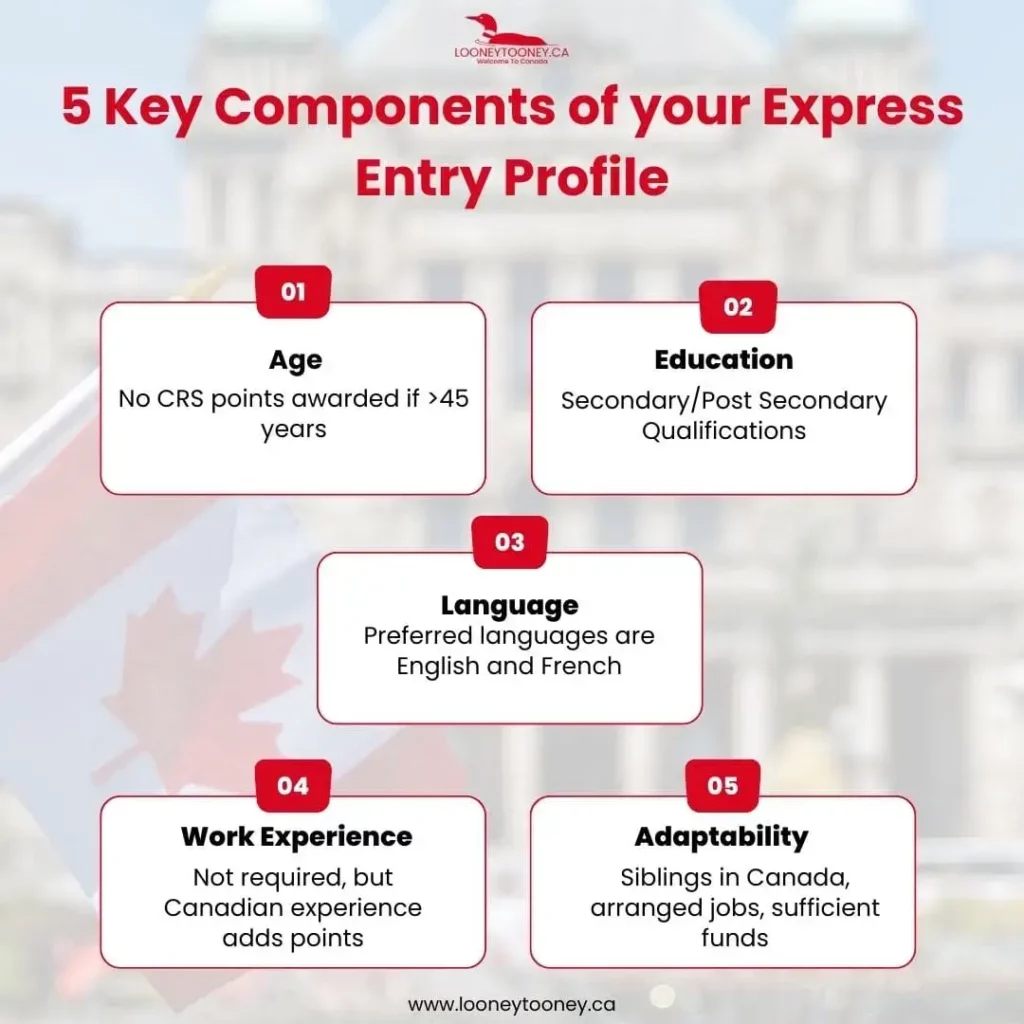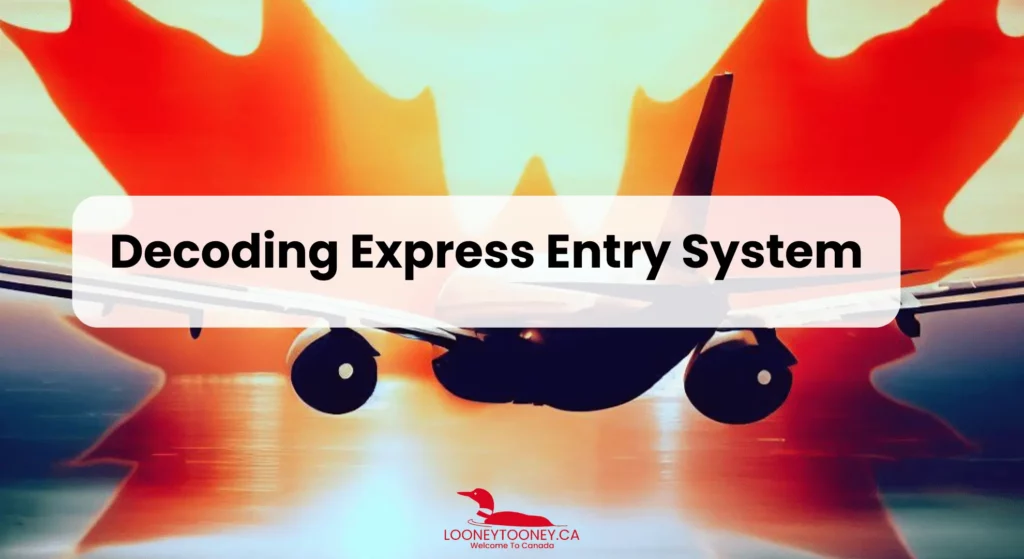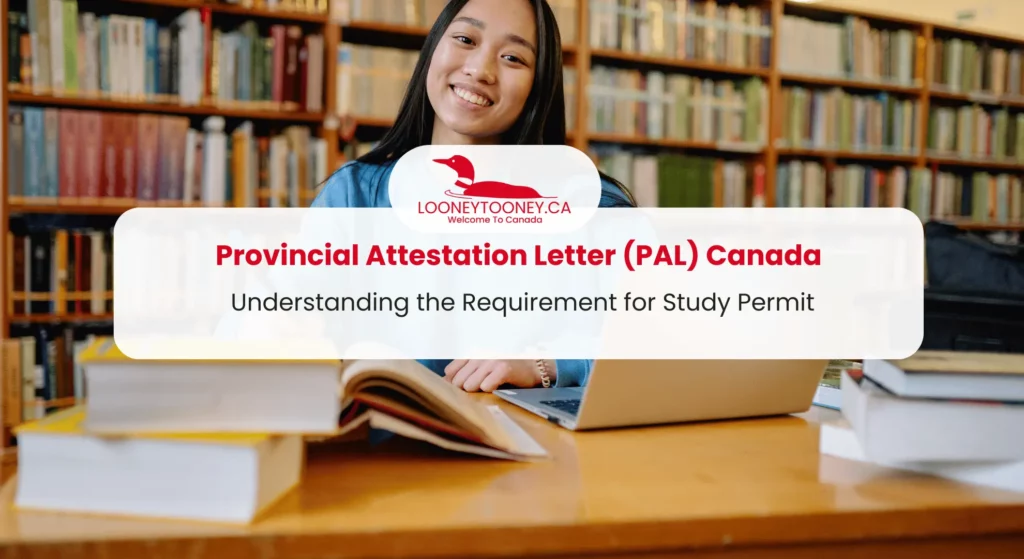Dreaming of making Canada your new home? “Express Entry System” could be your key to realizing that dream. Managed by Immigration, Refugees, and Citizenship Canada (IRCC), Express Entry has gained a reputation for its efficiency in processing applications from skilled workers. It’s not just the fastest route to obtain a Permanent Residency in Canada; it’s also highly popular for its ability to identify individuals with the skills and qualifications to contribute significantly to the economy.
Express Entry was introduced in 2015 and has become the primary avenue for skilled worker immigration to Canada and is renowned worldwide for its effectiveness. It’s designed to swiftly bring individuals and families from around the world to Canada within just a few months. While it’s undoubtedly the quickest path to Canadian immigration, it’s essential to understand that not everyone may qualify for Express Entry. Check out the article to know more about the Express Entry of Canada.
Table of Contents
- What is Express Entry System?
- What are the Immigration Programs Managed Through Express Entry System?
- How Does the Express Entry System Works?
- How to Apply for Express Entry?
- What is the Eligibility for Express Entry?
- Prerequisites for Express Entry
- What is the Express Entry Fee?
- What is the Processing Time of Express Entry Application?
- How is CRS Score for Express Entry System Calculated?
What is Express Entry System?
Express Entry is an application management system utilized by Immigration, Refugees, and Citizenship Canada to efficiently handle applications from skilled workers applying through three of Canada’s federal economic immigration programs.
This program is recognized as the quickest and most popular pathway to obtain a Permanent Residency in Canada. Its core objective is to select candidates who possess the skills, qualifications, and potential to contribute significantly to Canada’s economy and society.
Latest Express Entry Draw:
Express Entry Draw 300
Date of Draw: July 4, 2024
Number of Invitations Issued: 1,800
Minimum CRS: 436
Round Type: Trade occupations (Version 1)
Express Entry Draw 299
Date of Draw: July 2, 2024
Number of Invitations Issued: 920
Minimum CRS: 739
Round Type: Provincial Nominee Program
Express Entry Draw 298
Date of Draw: June 19, 2024
Number of Invitations Issued: 1,499
Minimum CRS: 663
Round Type: Provincial Nominee Program
What are the Immigration Programs Managed Through Express Entry System?
In the framework of the Express Entry system, individuals have the opportunity to submit applications for the following programs:
- Canadian Experience Class (CEC): This program is designed for skilled workers who possess Canadian work experience. It’s crucial to note that this work experience should have been acquired within the three years preceding your application.
- Federal Skilled Worker Program (FSW): Targeted at skilled workers with international work experience, this program has specific requirements related to education and other factors that applicants must meet.
- Federal Skilled Trades Program (FST): For skilled workers who hold qualifications in a skilled trade, this program requires either a valid job offer or a certificate of qualification to be eligible.
How Does the Express Entry System Works?
Express Entry System broadly has two main following steps before one could apply for a PR.
Points-Based Selection System (CRS)
Express Entry operates on a Comprehensive Ranking System (CRS), a points-based selection mechanism. Factors such as age, education, work experience, language proficiency, and adaptability are taken into account. The higher your score is, the better your chances of receiving an Invitation to Apply (ITA).
Regular Draws and Invitations to Apply (ITA)
The Canadian government regularly conducts draws from the Express Entry pool, extending invitations to individuals with the top CRS scores to apply for Permanent Residency. These draws typically occur every two weeks, making Express Entry a dynamic and responsive immigration system.
How to Apply for Express Entry System?
Getting Permanent Residency in Canada through the Express Entry system involves several clear steps:
Step 1: Determine Your Eligibility
There are two ways to determine whether you qualify for an Express Entry program:
- Respond to a series of questions to verify if you meet the minimum prerequisites.
- Check the detailed requirements for each program to ensure you qualify.
Step 2: Assess Your Score
Upon confirming your eligibility and submitting your profile, you will be assessed within the Express Entry pool using the Comprehensive Ranking System. This point-based system evaluates and scores your profile, subsequently ranking it within the pool. To secure an invitation, you must achieve a score above the minimum points score for the specific round of invitations.
Step 3: Gather Your Documents
To fill out your profile, you will need to compile essential documents, such as language proficiency test results, to substantiate your eligibility for Express Entry. Some documents may have lengthy processing times, so it’s advisable to prepare them in advance.
You will require specific documents at different stages of the Express Entry application process:
Documents for Your Profile
When creating your profile, you won’t need to upload documents, but you may need information from some or all of these documents:
- Passport or travel document
- Language test results
- Proof of Canadian education or educational credential assessment (if applicable)
- Provincial nomination (if received)
- A job offer in writing from a Canadian employer (if applicable)
- Proof of work experience
- Certificate of qualification in a trade occupation issued by a Canadian territory/province (if applicable)
- Proof of funds
Documents for Your Permanent Residence Application
If you receive an invitation to apply, you will need to upload copies of the documents used for your profile (see the list above). In most cases, you need to upload:
- Police certificates
- Medical exams
- Birth certificate (if declaring dependent children)
- Utilization of a representative form (if you have engaged a representative)
- Common-law union form (if declared as “common-law”)
- Marriage certificate (if declared as “married”)
- Divorce certificate and legal separation agreement (if declared as “divorced”)
- Death certificate (if declared as “widowed”)
- Adoption certificate (in cases where a dependent child is listed as “adopted”)
Other Documents
You only need to submit these if they are in your personalized document checklist. Your application won’t be refused or rejected if you don’t provide these documents; they are used to verify program requirements. These may include:
- Evidence of a familial connection with a relative in Canada
- Digital photos for identity confirmation
- Other names to verify aliases
- Authorization for the disclosure of personal information to a designated individual form
- Any additional documents relevant to your application.
Step 4: Complete Your Profile
Your Express Entry profile is where you provide information about yourself. If deemed eligible, you will be admitted into the candidate pool and assigned a CRS score. You can then submit your profile for consideration.
Step 5: Receive an Invitation & Submit the Application
Invitations to apply are extended to candidates with the highest scores in the pool. If you receive an invitation, you will have a 60-day window to submit your application. For most applications with all the necessary supporting documents, processing typically takes six months or less.
Taking these steps is your path to pursuing a Permanent Residency in Canada through the Express Entry system.
What is the Eligibility for Express Entry System?
To qualify for the Canada Express Entry program, you must meet specific criteria based on the program you are applying for. Here’s a breakdown of the eligibility requirements for each program:
| Eligibility criteria | Canadian Experience Class | Federal Skilled Worker Program | Federal Skilled Trades Program |
| Language skills | English or French skills – CLB 7 for TEER 0 or TEER 1 occupations – CLB 5 for TEER 2 or TEER 3 occupations | English or French skills – CLB 7 | English or French skills – CLB 5 for speaking and listening – CLB 4 for reading and writing |
| Type/Level of work experience | Canadian work experience in an occupation listed in 1 or more of these NOC TEER Categories: – TEER 0 – TEER 1 – TEER 2 – TEER 3 | Work experience in an occupation listed in 1 of these NOC TEER Categories: – TEER 0 – TEER 1 – TEER 2 – TEER 3 | Work experience in a skilled trade under key groups of TEER 2 or TEER 3: – Major Group 72, technical trades and transportation officers and controllers, excluding Sub-Major Group 726, transportation officers and controllers – Major Group 73, general trades – Major Group 82, supervisors in natural resources, agriculture and related production – Major Group 83, occupations in natural resources and related production – Major Group 92, processing, manufacturing and utilities supervisors, and utilities operators and controllers – Major Group 93, central control and process operators and aircraft assembly assemblers and inspectors, excluding Sub-Major Group 932, aircraft assemblers and aircraft assembly inspectors – Minor Group 6320, cooks, butchers and bakers – Unit Group 62200, chefs |
| Amount of work experience | One year in Canada in the last 3 years (either combination of full-time or part-time work) | One year continuous within the last 10 years (combination of part-time, full-time or more than 1 job in your primary occupation) | Two years within last 5 years (either combination of full-time or part-time work) |
| Job offer | Not required | Not required But you can get selection criteria (FSW) points for having a valid job offer. | Required: – A valid job offer of full-time employment for a total period of at least 1 year or – A certificate of qualification in that skilled trade issued by a Canadian provincial, territorial or federal authority |
| Education | Not required | Secondary education required. You can get more selection criteria (FSW) points for your post-secondary education. | Not required |

Prerequisites for Express Entry System
To be eligible to apply through Express Entry as a skilled worker, you should generally:
- Possess a minimum of one year of continuous full-time (or equivalent part-time) work experience in a skilled occupation within the last 10 years.
- Demonstrate a minimum Canadian Language Benchmark (CLB) of seven in either English or French by taking an approved language test.
- Hold post-secondary education that is evaluated against Canadian standards through an Education Credential Assessment.
These represent the fundamental qualifications for applying to Canada’s Express Entry system as a skilled worker. It’s essential to note that fulfilling these criteria doesn’t guarantee an invitation to apply for Canadian Permanent Residence, as candidates with stronger profiles are prioritized over those who simply meet the minimum requirements.
What is the Express Entry Fee?
The expense associated with immigrating to Canada through Express Entry amounts to approximately $2,300 CAD for a single applicant or around $4,500 CAD for a couple. This breakdown comprises various elements:
- Language tests: Typically averaging around $300.
- Educational Credential Assessment (ECA): Generally costing about $200.
- Biometrics: $85 per person.
- Government fees: $1,325 for adults and $225 for children.
- Medical examination fees: An average of $450 for adults and $250 for children.
- Police clearance certificates: Typically around $100 per country.
It’s important to note that no government fees are required when initially submitting your Express Entry profile. These fees are only applicable when you receive an invitation to apply for Canadian Permanent Residence. Additionally, depending on your immigration route, you may also need to pay provincial immigration fees if you apply through a Provincial Nominee Program (PNP).
Furthermore, unless you are applying under the Canadian Experience Class program or have a valid job offer, you must demonstrate that you have adequate funds to support your settlement in Canada. These funds are not fees paid to the government but are necessary to be eligible for a Permanent Residence visa. The required amounts vary based on family size, as outlined in the table below:
| Number of Family Members | Funds Required |
| 1 | $13,757 |
| 2 | $17,127 |
| 3 | $21,055 |
| 4 | $25,564 |
| 5 | $28,994 |
| 6 | $32,700 |
| 7 | $36,407 |
| For each additional family member | $3,706 |
Note: Required amount as of May 2023.
What is the Processing Time of Express Entry Application?
The Express Entry process can be completed in six months, starting from the submission of your Express Entry profile to the issuance of a Permanent Resident visa. However, the timeline can vary for different cases. If you don’t get an invitation to apply, your Express Entry profile will stay active in the pool of applicants for 12 months. After 12 months, if you have not received an invitation, you can resubmit your profile and remain in the pool. Here’s a breakdown:
- Your profile stays valid in the Express Entry pool for 12 months.
- Upon receiving an Invitation to Apply (ITA), you have 60 days to submit your complete application with the required documents.
- Once Immigration, Refugees, and Citizenship Canada receives your full application, processing for your Permanent Resident visa typically takes around six months.
How is CRS Score for Express Entry System Calculated?
When discussing Canada’s “Express Entry points,” it commonly refers to the Comprehensive Ranking System score. Canada employs the CRS score to assess and rank candidates in the Express Entry pool, considering several factors:
- Age
- Education level
- Proficiency in English or French
- Work experience in both foreign and Canadian contexts
- Spousal factors
- Ties to Canada
To get an idea of your CRS score, you can utilize this CRS calculator tool for an estimate.
If No Invitation Received: Next Steps
If you don’t receive an invitation to apply within 12 months of submitting your Express Entry profile, it will automatically expire, and you can find this date in your account. When your profile expires, it will be removed from the system, and you will receive a notification in your account. You still have the option to create a new profile.
However, it’s important not to create a new profile until your current one has expired. If you do, you will need to withdraw your existing profile first. To withdraw your profile:
- Sign in to your account
- On the main page, go to “View the applications you submitted”
- Click the link reading “Withdraw profile”
- Click the “Continue” below the “Warning!” text under the heading “What would you like to do today?”
Keep in mind that if you don’t submit a new profile, you won’t be able to mention Express Entry in your profiles on job boards. If you submit a new profile, you will receive a new Express Entry profile number and a fresh Job Seeker validation code for Job Bank.
Additionally, there are alternative immigration routes you can explore, such as applying directly to a province or territory through the Provincial Nominee Program or discovering other pathways to immigrate to Canada.
Express Entry System: Your Gateway to Canada’s Opportunities
As we wrap up our exploration of Canada’s Express Entry system, we stand on the threshold of an incredible journey. This program, tailored for skilled workers, embodies the aspirations and dreams of those looking to start a new chapter in the Great White North.
Think of this system as your guide, leading you through the intricate landscapes of eligibility criteria, points-based selection, and documentation requirements. It’s a dynamic and responsive immigration route, akin to an exciting adventure where every two weeks, a new chapter unfolds with regular draws and invitations to apply for Permanent Residency.
Stay informed about updates and changes to the Express Entry system through LooneyTooney.ca, and don’t hesitate to explore alternative immigration pathways if necessary. With determination and the right strategies, you can fulfill your Canadian dream.
Explore our detailed guides:





